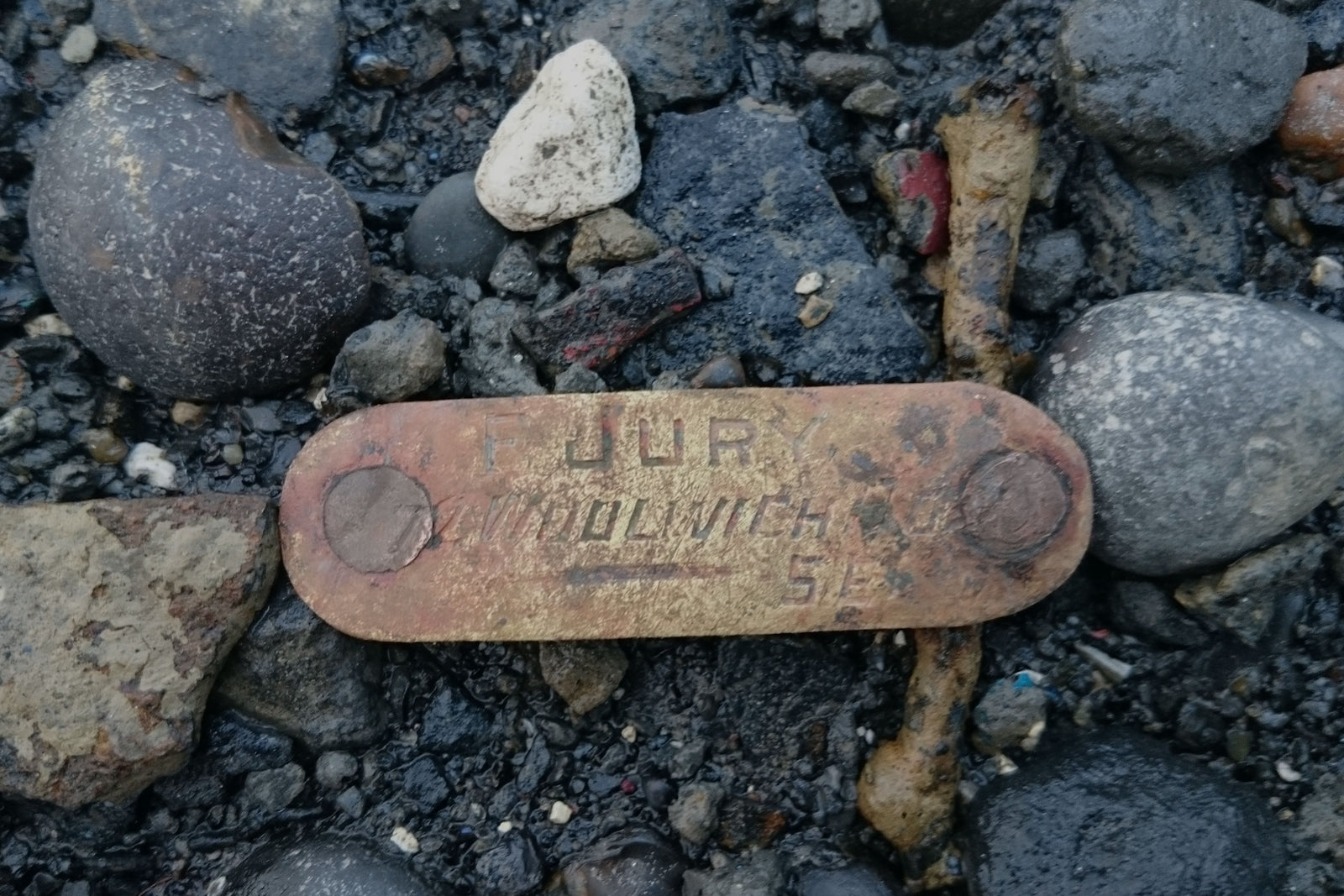Introduction
Meet Nicola White, mudlark and creator of Tideline Art. Nicola regularly posts videos to her YouTube channel, showcasing her incredible treasures and finds. Over the course of the next 12 months, Nicola will be sharing her fascinating stories and finds with us on the Muck Boot blog!
When I first moved to London over twenty years ago from Cornwall, I had no idea that the River Thames would open up such a fascinating and magical world, and that when the tide went out, its muddy banks would reveal to me a wealth of historical secrets and characters from the past. I was used to beachcombing on windswept beaches in Cornwall, but it never occurred to me that something similar might be possible in an urban setting such as London.

It was one weekend in Greenwich when I was looking out over the river wall, that I noticed some old stone steps which lead to a large exposed section of beach below me. I tentatively made my way down and on reaching the beach immediately felt a sense of peace and calm. When I closed my eyes for a moment to listen to the fast-flowing river and the shrieking seagulls, I felt as if I had been transported for a moment back to a Cornish beach.
As I walked along I looked down to see small pieces of pottery and glass peeking out amongst stones and oyster shells. There were also curious little cylindrical pieces of white clay which I later learned were fragments of old clay tobacco pipes discarded centuries ago by Londoners of the past. I was excited with my little handful of history and wanted to learn more.

I subsequently found out that “mudlarking” was a thing and that there were many others intrigued by the historical artefacts left out at low tide on the Thames. I applied for my mudlarking permit from the Port of London Authority and from the moment I received it, during my free time I would often pull on my boots and set off to explore different stretches of the Thames foreshore.
It’s been many years since that first chance visit to the banks of the Thames in Greenwich and I have since been fortunate enough to find some extraordinary objects whilst mudlarking. Some of them have been recorded with the Museum of London on the Portable Antiquities Scheme database. Mudlarks are required to record their finds. It’s important to do so as it enables the museum to build up a picture of what was going on in London and where. Most of the time once objects are recorded, they are returned to the finder.
I will tell you about some of my finds over the course of future blog posts. For now though let me share the story of one of my absolute favourites and which for me is the essence of mudlarking.
I remember the day well. It was March and it was drizzling. I was searching an area along the Thames which used to be a ship breaking yard. The mud was covered in pieces of metal. As I searched amongst the old brass nails and rivets, a small piece of brass shone up at me through the rain. When I picked it up, I noticed the faint engraving of a name – F. Jury, 72 Woolwich Road, SE10. From this information I was able to find out the story of Frederick Jury, born in 1873. Frederick fought in the trenches of the First World War and was seriously injured when he was hit by a grenade. He survived however and he was discharged with a silver war medal. He died in 1932. I traced the cemetery close to Greenwich where he was buried and with the help of the cemetery keeper, I found Fred’s final resting place in the paupers’ grave area, under a pile of brambles. I now return each year to lay flowers on his grave.

Frederick Jury never had children of his own so it’s special to be able to share his story. If I had not pulled on my wellies that rainy day in March and found his luggage tag, Fred’s story could well still be lying forgotten in the mud. Fred is just one of many people whose story has been brought back to life through a mudlarking find. It’s this kind of precious find which keeps me returning to the river Thames at low tide.
More on Mudlarking
Related Product
Links




